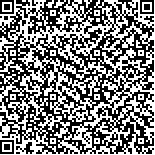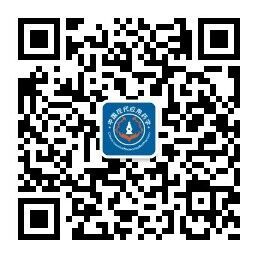| 引用本文: | 蓝玫贵,覃焕,谢秋花,李静,李迎迎,蒋志敏.姜黄素肠溶纳米纤维的制备及药代动力学研究[J].中国现代应用药学,2024,41(22):11-20. |
| LAN Meigui,QIN Huan,XIE Qiuhua,LI Jing,LI Yingying,JIANG Zhimin.Fabrication and Pharmacokinetics of Curcumin-Loaded Enteric Nanofibers[J].Chin J Mod Appl Pharm(中国现代应用药学),2024,41(22):11-20. |
|
| |
|
|
| 本文已被:浏览 464次 下载 316次 |

码上扫一扫! |
|
|
| 姜黄素肠溶纳米纤维的制备及药代动力学研究 |
|
蓝玫贵, 覃焕, 谢秋花, 李静, 李迎迎, 蒋志敏
|
|
桂林医学院
|
|
| 摘要: |
| 目的 制备姜黄素肠溶纳米纤维,考察其体外释放行为以及在大鼠体内的药代动力学特征。方法 以尤特奇L100-55为聚合物基质,添加一定量的姜黄素,或再加入少量佐剂胡椒碱和表面活性剂TPGS,通过静电纺丝方法制备得到一系列负载姜黄素的尤特奇纳米纤维。用SEM、FTIR、DSC和XRD对载药纤维的形貌、热稳定性和药物在纤维中的状态进行表征,通过高效液相色谱测定姜黄素和胡椒碱含量,计算纤维的载药量和包封率,用溶出度测定仪以桨法测定体外药物释放。大鼠灌胃给药后高效液相色谱法测定血药浓度,用DAS 2.0软件处理并分析药动学数据。结果 载药纤维结构均一,热稳定性良好,载药量可控,包封率高,药物以非晶态分散在纤维中。载药纤维在pH=1.2人工胃液中释放姜黄素较少,而在pH=6.8人工肠液中释放出大部分药物。游离姜黄素组的达峰时间Tmax为30 min,而载药纤维组的Tmax均是180 min。载药纤维S-2(负载姜黄素)、S-3(负载姜黄素和少量TPGS)和S-4(负载姜黄素以及少量胡椒碱和TPGS)组的峰浓度Cmax分别是游离姜黄素组的3.8、8.8和10.5倍,各组的姜黄素相对生物利用度分别为1151.7%、2859.5%和3771.8%。结论 负载姜黄素的尤特奇纳米纤维可以用作肠溶制剂实现姜黄素的肠道靶向递送和释放,能够改善姜黄素的口服吸收,显著提高姜黄素的口服生物利用度,而在载药纤维中同时加入少量胡椒碱和TPGS,能够进一步大幅提升生物利用度。 |
| 关键词: 姜黄素 肠溶纳米纤维 静电纺丝 体外释放 药代动力学 生物利用度 |
| DOI: |
| 分类号:R944.2 |
| 基金项目:广西高等学校千名中青年骨干教师培育计划(桂教师范〔2019〕81号) |
|
| Fabrication and Pharmacokinetics of Curcumin-Loaded Enteric Nanofibers |
|
LAN Meigui, QIN Huan, XIE Qiuhua, LI Jing, LI Yingying, JIANG Zhimin
|
|
Guilin Medical University
|
| Abstract: |
| OBJECTIVE To fabricate curcumin-loaded enteric nanofibers, investigate their release behavior in vitro and pharmacokinetics in rats. METHODS A series of curcumin-loaded Eudragit nanofibers were prepared by electrospinning using Eudragit L100-55 as the polymer matrix, with the addition of a certain amount of curcumin and with/without a small amount of adjuvant piperine and surfactant TPGS. The morphology and thermal stability of the drug-loaded fibers were characterized by SEM and DSC, respectively. The physical status of drugs in fibers was determined by FTIR and XRD. The contents of curcumin and piperine were determined by HPLC, and the drug loading and entrapment efficiency of the fibers were calculated. The in vitro drug release of the fibers was investigated by the paddle method using a dissolution tester. The plasma drug concentration was determined by HPLC after oral administration of the drug-loaded fibers in rats, and the pharmacokinetic parameters were processed and analyzed by DAS 2.0 software. RESULTS The drug-loaded fibers have uniform structures, good thermal stability, controllable drug loading, and high entrapment efficiency. Drugs are dispersed in fibers in amorphous state. Small amount of curcumin are released from these fibers in the simulated gastric fluid of pH 1.2, while in the simulated intestinal fluid of pH 6.8 most of the drug are released. The peak time Tmax of the free curcumin group is 30 min, while Tmax of the drug-loaded fiber groups are 180 min. The peak concentration Cmax of the drug-loaded fiber groups S-2 (loaded with curcumin), S-3 (loaded with curcumin and a small amount of TPGS) and S-4 (loaded with curcumin as well as a small amount of piperine and TPGS) are 3.8, 8.8 and 10.5 times higher than that of the free curcumin group, respectively. The relative bioavailability of curcumin for S-2, S-3 and S-4 are 1151.7%, 2859.5% and 3771.8%, respectively. CONCLUSION The curcumin-loaded Eudragit nanofibers can be used as enteric formulations to achieve intestinal-targeted delivery and release of curcumin. The fibers can increase the oral absorption and significantly improve the oral bioavailability of curcumin. The addition of a small amount of piperine and TPGS to the curcumin-loaded nanofibers can further improve the bioavailability by a big margin. |
| Key words: curcumin enteric nanofibers electrospinning in vitro release pharmacokinetics bioavailability |
|
|
|
|
